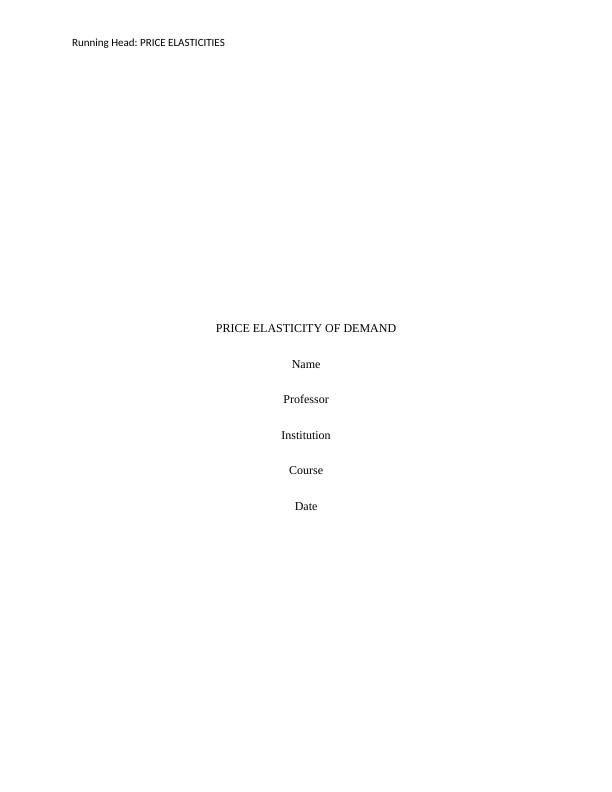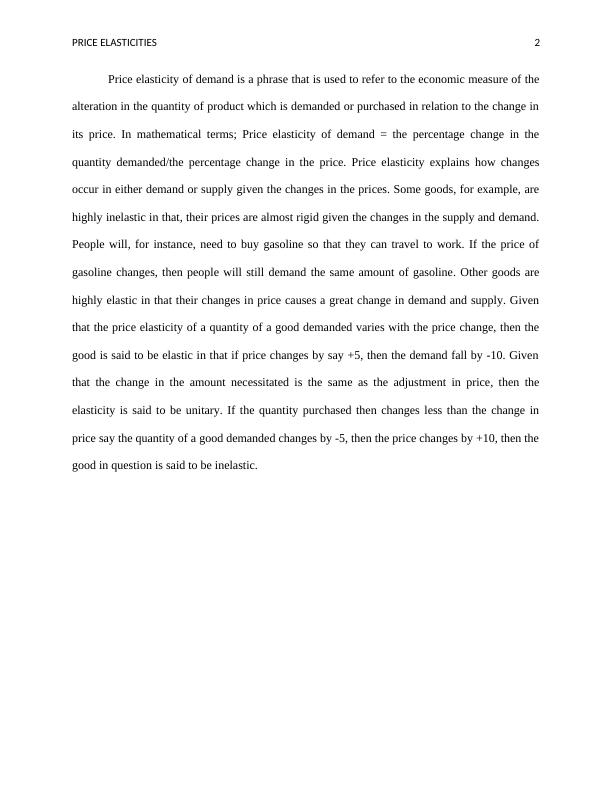Price Elasticity of Demand
Added on 2023-05-29
12 Pages2633 Words117 Views
End of preview
Want to access all the pages? Upload your documents or become a member.
Types of Demand Elasticity in Managerial Economics
|14
|3439
|60
Factors Affecting Price Elasticity of Demand
|12
|2791
|209
Economics Assignment: Price Elasticity of Demand and Trade Protectionism
|9
|2332
|431
Elasticity of Demand in Economics
|8
|1420
|44
Impact of Elasticity of Demand and Supply on Individuals
|9
|2051
|328
Microeconomic Elasticity of Demand
|6
|1220
|24




